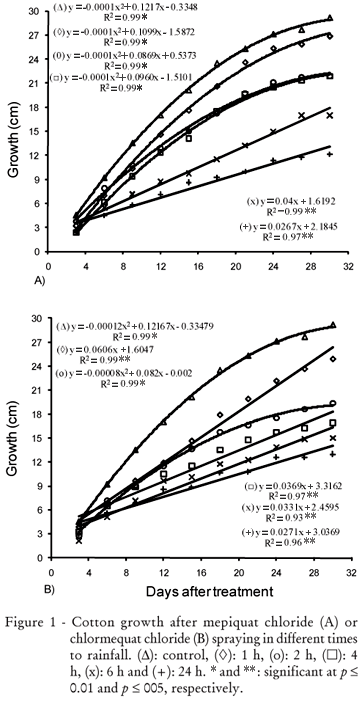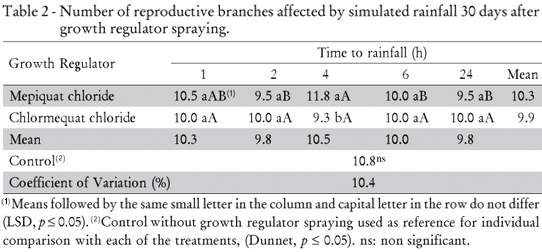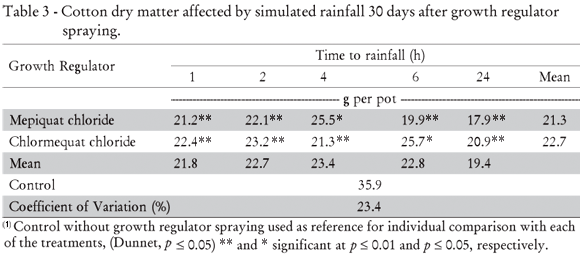Plant growth regulators (PGRs) applied to cotton plants (Gossypium hirsutum L.) can be washed off by rainfall. It is expected that the closer the rainfall to spraying time, the higher the product loss and the higher the amount of product to be reapplied to reach the desired growth rate. The objective of this study was to evaluate the effects of time between rainfall and application of either mepiquat chloride or chlormequat chloride to cotton on plant growth, as well as, estimate the need for PGR reapplication. Cotton was grown in 12-L pots with soil in a greenhouse. PGRs were applied forty days after seedling emergence, when 50% of plants had one pinhead square. Rainfall was simulated 1, 2, 4, 6, or 24 h after spraying. Plant height was measured just before PGR application and then at 3-d intervals for 30 d. At harvest, the number of reproductive branches and structures were counted before dry matter phytomass determination. Both growth regulators reduced cotton dry matter yields regardless of rainfall interval. PGRs controlled excessive plant growth; however, their efficiency was reduced as the time elapsed until rainfall was shorter. Product losses were detected after all rainfall intervals, which, in field conditions would require PGR reapplication. Mepiquat chloride rates to be reapplied after rain were on average 17% higher than chlormequat chloride rates.
Gossypium hirsutum L.; mepiquat chloride; chlormequat chloride







